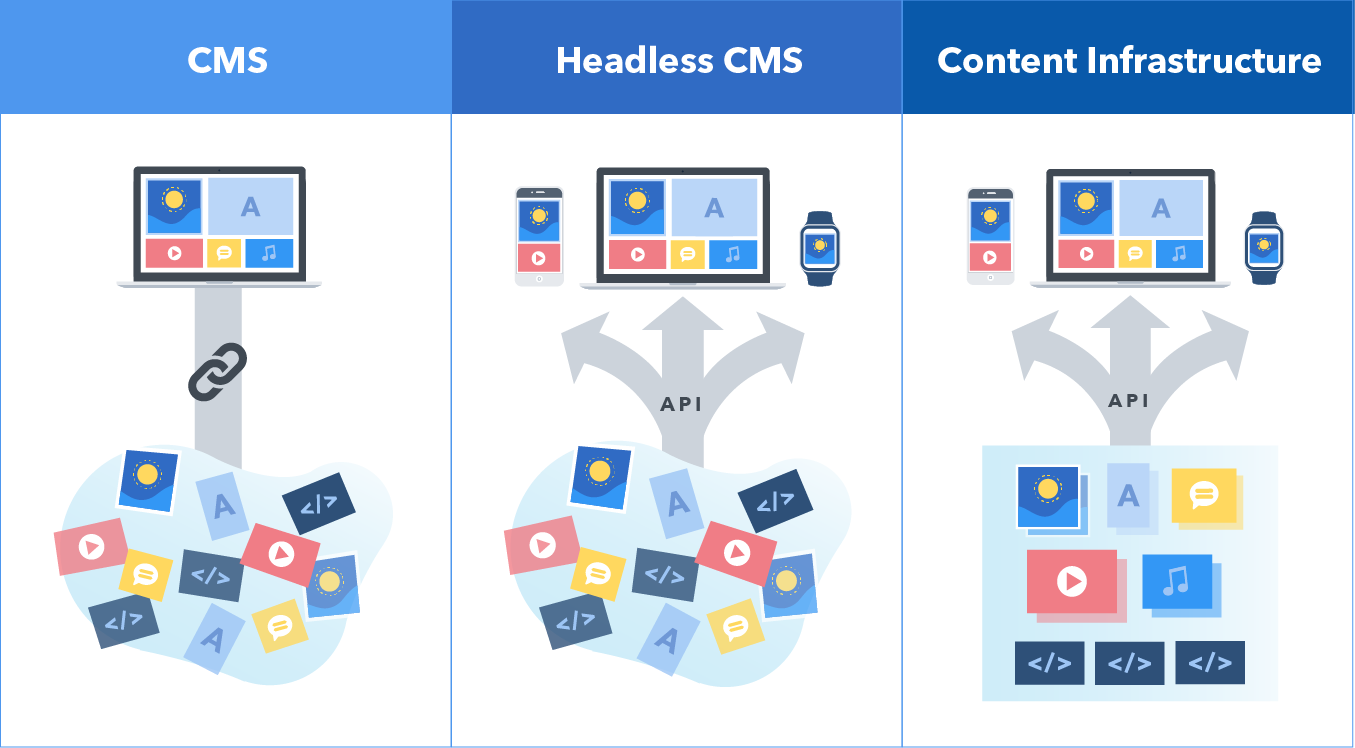The power of content infrastructure on website development
April 16th, 2021

Image by @south_nostalghia
If you are developing a website, data management is a very important part to worry about. Especially if you are creating content that is been read by lots of people and you have a bunch of content creators. Over the years, people have been using powerful tools called Content Management Systems (CMS) those are tools that help people to create content on the internet even if they don't know anything about programming and web development, they only worry about creating the content on the CMS and the pages were automatically generated and showed on the webpage.
However, CMS focus on showing the information in only one form (the webpage) so the targets of the content should be computer users, and the only way to access this information is through that webpage. What if we wanted to access that page in a mobile application, that's when Headless CMS was created.
Those new tools allow the creators to add the content to the application and then all the information is delivered to all the external applications that consume the API provided by the Headless CMS. That new way of creating content was great, but technology advances real quick and a new way of managing data structure called Content infrastructure arose.
Content infrastructure

Image by Contentful
In the previous image, we can see the three different content management systems we talked about. As you can see, first we have CMS that has all the information unorganized and is passed to a single destination; then we have Headless CMS that maintains the content unorganized but allow the users to consult the information from any app that has access to it; finally, we have the Content Infrastructure, that not only delivers all the information to different consumers, it also organizes all the information we are introducing. But why is that important?
It makes the content more maintainable: let's imagine you have a blog, the post on that blog has a certain number of tags, using a content infrastructure allows you to create custom models that represent the information about the blog post (title, creation date, body, summary, etc) and tags (description, order, etc). And you can create relationships between those two models on each blog post, now, if you want to make changes to a tag, you only have to do it once and it will apply to all blog posts that use that tag!
Improves readability: having the information well-structured makes easier consulting in other apps, for example: if you are building the site with GatsbyJS there is this plugin that does all the hard work for you and organizes the information in graphQL ready to be used.
Less redundancy: if you are using the same resource (image, asset, etc) in many blog posts, you can have only one file and reference it on every post you want, so you save space and you can have more files.
Conclusion
All in all, content infrastructure is a great step forward in content management, it has useful benefits and is not difficult to implement in a project, some free content infrastructure services are a good place to start, like contentful, that is (interesting fact) where all of the posts on this blog are stored. Give it a try and experience the power of content infrastructure on your website!